Hey Joe
Hey Joe
Hey Joe, where you goin’ with that gun in your hand ? I’m goin’ down to shoot my ol’ lady.
To post – World War II Americans the name “Joe”seemed to represent everyman. A typical male was an “average Joe”; a decent fellow was “a good Joe”. “Hey Joe”is a crime ballad with a question and answer format. It depicts a series of encounters between the singer and Joe: each verse consisted of a single couplet.
“Hey Joe” seems like it’s been around since the frontier days, but when Jimi Hendrix recorded that tale of a revenge and murder, it was only 5 years old or so.
Hey Joe
In that short time, “Hey Joe” — aka “Hey Joe, Where You Gonna Go” — had been covered by the Leaves, Love, Byrds, Music Machine, Shadows of Knight and Standells, along with every garage band on your old block.
The main figure in the authorship question regarding "Hey Joe" is Dino Valenti (born Chester Powers). He copyrighted the song under his given name, Chester Powers. Apparently, it was written by Billy Roberts, and scholars have suggested that Valenti legally bought the song from Roberts.
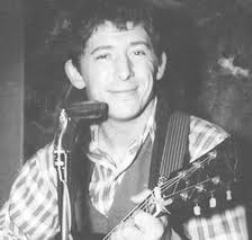
Dino Valente
Billy Roberts was a relatively obscure California-based folk singer, guitarist and harmonica player who performed on the West Coast coffeehouse circuit. He later recorded the country rock album Thoughts of California with the band Grits in San Francisco in 1975, produced by Hillel Resner. Resner has stated that a live recording of Roberts performing "Hey Joe" exists, dating from 1961. He registered "Hey Joe" for copyright in the U.S. in 1962.
Roberts possibly drew inspiration for "Hey Joe" from three earlier works: his girlfriend Niela Miller's 1955 song "Baby, Please Don’t Go To Town" (which uses a similar chord progression based on the circle of fifths); Carl Smith's 1953 US country hit "Hey Joe!" (written by Boudleaux Bryant), which shared the title and the "question and answer" format; and the early 20th century traditional ballad "Little Sadie", which tells of a man on the run after he has shot his wife.
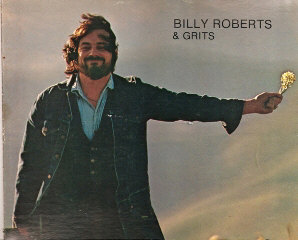
Billy Roberts
The famous F-C-G-D-A-Progression is a very simple application of the circle of fifths. One of the most common strategies in finding out the harmonics on the spot is trying out the dominant and subdominant chords from the supposed basic key-harmony (tonic) of the track shrilling from the loudspeaker. Having the circle of fifth in mind is pretty much helpful here. A lot of teenage bandleaders applying the circle of fifth, it seems likely that the F-C-G-D-A-Progression had been discovered or -as some may claim- “written” pretty often.
The earliest known commercial recording of the song is the late 1965 single by the L. A. garage band, The Leaves, who also had the first hit version of the song with a re-recording in 1966.
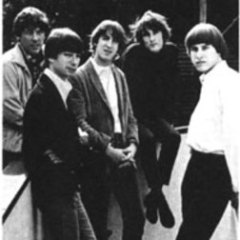
The Leaves
It was the slower, atmospheric arrangement by Tim Rose that was the inspiration for what is currently the best-known (1966) version by The Jimi Hendrix Experience.
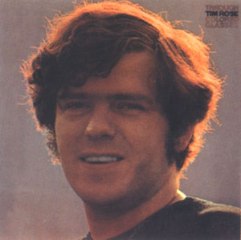
Tim Rose
The ex-bassist for The Animals, Chas Chandler, who was now focusing on managing other acts, had seen Rose performing the song at the Cafe Wha? in New York City and was looking for an artist to record a rock version of "Hey Joe".
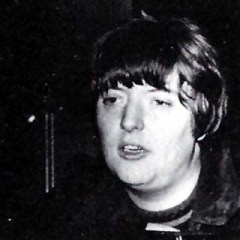
Chas Chandler
Chandler discovered Jimi Hendrix, who had also been playing at the Cafe Wha? in 1966 and performing an arrangement of "Hey Joe" inspired by Rose's rendition.
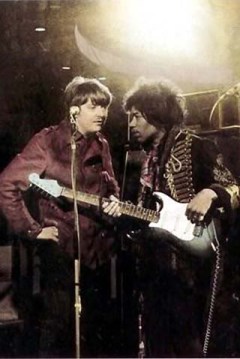
Chas Chandler & Jimi Hendrix
On October 23, 1966, three weeks after the The Jimi Hendrix Experience formed, the trio entered the studio for the first time. Hendrix, bassist Noel Redding, and drummer Mitch Mitchell recorded "Hey Joe".
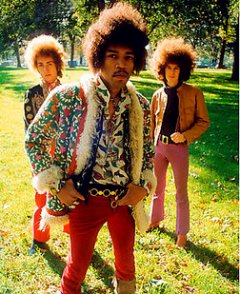
Jimi Hendrix Experience
The song opens as a straightforward blues, with Hendrix alternating his vocal delivery a tad to emphasize the question-and-answer format.
The female backup singers are fairly hot in the mix, at the request of the guitarist, still trying to find his voice as a frontman. For the first half, Mitch Mitchell’s drums and Noel Redding’s bass simply keep the beat. As the song moves forward
the drumming becomes increasingly aggressive, a suggestion, perhaps, that Joe is starting to lose it. This is a conversation, after all,
with a murderer fresh from the kill. At the 1:40 minute-mark, “Hey Joe” morphs into an Experience song, as Mitchell’s now-busy playing reaches full speed and
Redding delivers the signature bass line (used by most bands from “Hey Joe’s” beginning). Hendrix issues a fluid solo, short and simple. By song’s end, head-banging is in full effect.
Hendrix’s version credits Roberts as the writer, but in the liner notes the guitarist calls it “a blues arrangement of an old cowboy song that’s about 100 years old.” Hendrix probably was joking, but it added another red herring to the “Hey Joe” saga.
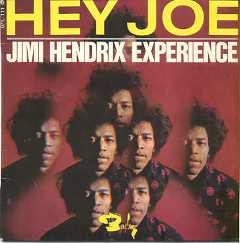
Hey Joe, cover
Released in December 1966, Hendrix's version became a hit in the United Kingdom, entering the Top 10 of the UK Singles Chart in January 1967 and peaking at #6. Pitched to Britain's freer, more receptive singles market, "Hey Joe" rose into the Top Ten in early 1967, the dawn of a new era of guitar experimentation and psychedelic blues rock.
"Hey Joe" was the last song Jimi Hendrix performed at the Woodstock festival in 1969 and as such, it was also the final song of the whole festival. The song was performed after the crowd, comprising the 80,000 who hadn't yet left the festival, cheered for an encore.
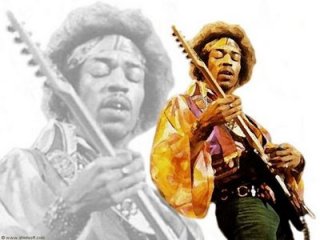
Jimi Hendrix
Hey Joe, Jimi Hemdrix’s lyrics
Hey Joe, where you goin' with that gun in your hand Hey Joe, I said where you goin' with that gun in your hand I'm goin' down to shoot my ol' lady You know I caught her messin' 'round with another man I'm goin' down to shoot my ol' lady You know I caught her messin' 'round with another man And that ain't too cool Hey Joe, I heard you shot your woman down, shot her down, down Hey Joe, I heard you shot your lady down, shot her down to the ground Yes, I did it, I shot her You know I caught her messin' 'round with another man Yes I did, I shot her You know I caught her messin' 'round with another man And I gave her the gun I shot her! Hey Joe, where you gonna run to now, where you gonna run to Hey Joe, where you gonna run to now, where you, where you gonna go I'm goin' way down south, way down to Mexico way, all right I'm goin' way down south, way down where I'll be free Ain't no one gonna mess with me there, baby Ain't no hang-man gonna He ain't gonna put a rope, around me You better believe it, right now Hey, Joe, you better run on down...
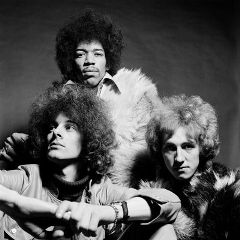
Jimi Hendrix Experience
Last Updated (Sunday, 22 March 2015 12:09)








